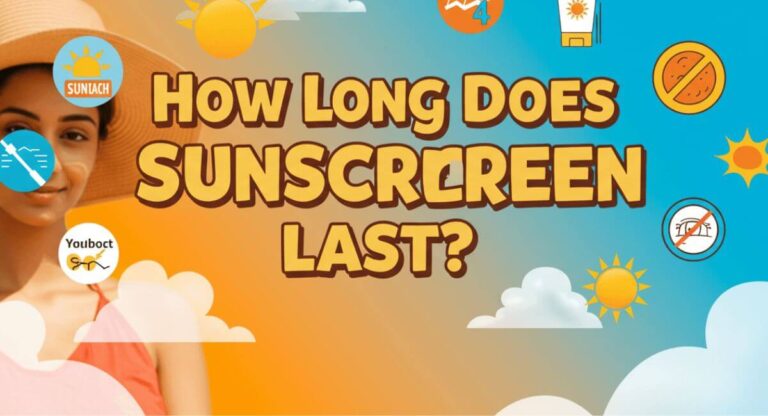When Was Sunscreen Invented? 4000 Years Look at the Origins of Sunscreen
Table of Contents
The question of when was sunscreen invented takes us on a fascinating journey through human history. Long before the sleek bottles and SPF ratings we recognize today, civilizations around the world developed ingenious methods to protect themselves from the sun’s harmful rays. The evolution of sunscreen reflects our growing understanding of UV radiation and its effects on human skin, as well as our continuous innovation in skincare science.
In this comprehensive guide, we’ll trace the origins of sun protection from ancient civilizations to modern formulations, revealing how what we now call “sunscreen” came to be. Whether you’re a skincare enthusiast, history buff, or simply curious about when that bottle of SPF 50 in your beach bag got its start, this exploration of sunscreen’s origins offers fascinating insights into one of our most essential skincare products.
Ancient Sun Protection: The Precursors to Modern Sunscreen
Long before scientists understood UV radiation, ancient civilizations recognized the need to protect themselves from the sun. While we can’t pinpoint exactly when sunscreen was invented in its modern form, we can trace its early precursors back thousands of years.
Ancient Egypt: The Original Sun Protection Formula
The Ancient Egyptians, perhaps the earliest documented sun protection innovators, used a mixture of rice bran, jasmine, and lupine extracts to shield their skin around 4,000 BCE. These natural ingredients contained compounds that absorbed UV radiation—a remarkable achievement considering they lacked our modern understanding of solar damage.
Egyptian nobility also applied red ochre and other minerals to their skin, which provided physical barrier protection similar to today’s mineral sunscreens. Interestingly, archaeologists have found that many Egyptian cosmetic recipes specifically mentioned sun protection as their purpose.

Ancient Greece and Rome: Olive Oil as Sunscreen
Greek and Roman civilizations developed their own methods of sun protection. Athletes in Ancient Greece would coat their bodies with olive oil, which offered minimal sun protection while keeping the skin moisturized. Roman physician Galen created one of the first documented sunscreen formulations in the 2nd century CE—a mixture of olive oil, beeswax, and rose petals.
Asia: Rice and Plant-Based Protection
In ancient China and Japan, rice starch pastes served as facial protection from the sun. These white pastes reflected sunlight and prevented tanning, which was culturally undesirable. Japanese women also used extracts from the licorice plant, which contains compounds now known to disperse UV radiation.

The Modern Era of Sunscreen: From Military Necessity to Consumer Product
The development of what we now recognize as sunscreen accelerated dramatically in the early 20th century, finally providing a clearer answer to when was sunscreen invented in its contemporary form.
The 1930s: The First Commercial Sunscreen
Many skin protection experts consider 1938 a pivotal year in answering the question of when was sunscreen invented for mass consumption. Austrian chemist Franz Greiter created what many consider the first effective sunscreen after suffering sunburn while climbing Mount Piz Buin in the Alps. He named his product “Gletscher Crème” (Glacier Cream), later marketed as Piz Buin—a brand that still exists today.
Around the same time in the United States, pharmacist Benjamin Green developed a similar product. Initially created as “Red Vet Pet” (red veterinary petrolatum) to protect soldiers during World War II, this thick, red petroleum jelly was the precursor to Coppertone suntan lotion, which would become immensely popular in the 1950s.
The 1940s: Introduction of the SPF Rating
In 1946, Franz Greiter introduced the concept of Sun Protection Factor (SPF), revolutionizing how we measure sunscreen effectiveness. This rating system, still used today, quantifies how much longer skin covered with sunscreen takes to burn compared to unprotected skin.
The 1970s-1980s: UV Understanding and Formulation Advances
Scientific breakthroughs in the 1970s and 1980s advanced our understanding of both UVA and UVB radiation. While earlier formulations primarily blocked UVB rays (responsible for sunburn), researchers began developing broad-spectrum products that also protected against UVA rays, which penetrate deeper into the skin and contribute to premature aging and skin cancer.
In 1977, water-resistant formulations hit the market, making sunscreen more practical for swimming and outdoor activities. By the mid-1980s, sunscreens began incorporating ingredients like avobenzone that specifically targeted UVA protection.
The Science Behind Modern Sunscreen: How It Works
Understanding when sunscreen was invented in its various iterations helps appreciate the scientific advances that make modern formulations so effective. Today’s sunscreens work through two primary mechanisms:
Physical (Mineral) Sunscreens
Physical sunscreens contain mineral ingredients like zinc oxide or titanium dioxide that sit on the skin’s surface and physically block or scatter UV radiation. These ingredients provide broad-spectrum protection against both UVA and UVB rays and are particularly recommended for sensitive skin.
Chemical Sunscreens
Chemical sunscreens use organic compounds like oxybenzone, avobenzone, and octinoxate that absorb UV radiation and convert it to heat, which is then released from the skin. These formulations typically feel lighter on the skin and are easier to spread.
Sunscreen Regulations and Public Health Awareness
The history of when sunscreen was invented includes important regulatory milestones that transformed it from a cosmetic to a recognized health product:
FDA Regulations
In 1978, the U.S. Food and Drug Administration (FDA) began regulating sunscreen as an over-the-counter drug rather than a cosmetic, requiring manufacturers to prove their products’ safety and efficacy. This classification fundamentally changed how sunscreen was developed, marketed, and perceived by consumers.
The Skin Cancer Connection
As research increasingly linked UV exposure to skin cancer, public health campaigns in the 1980s and 1990s emphasized sunscreen use as a cancer prevention strategy. This shift changed sun protection from primarily a cosmetic concern to an essential health practice.
The Future of Sun Protection
The story of when sunscreen was invented continues to evolve with ongoing innovations:
Nanoparticle Technology
Modern sunscreens often use nanoparticle forms of zinc oxide and titanium dioxide, which offer the same protection as their traditional counterparts but with improved cosmetic appeal (no white cast).
Biological Sunscreens
Research into naturally UV-resistant organisms like coral and algae points toward biologically derived UV filters that may be more environmentally friendly than current options.
Oral Sunscreens
Scientists are exploring nutritional compounds that may offer supplementary sun protection from within, potentially complementing topical applications.
Environmental Considerations
Recent chapters in the story of when sunscreen was invented include growing awareness of environmental impacts:
Reef-Safe Formulations
Evidence suggesting that certain chemical UV filters may harm coral reefs has driven the development of “reef-safe” sunscreens that exclude ingredients like oxybenzone and octinoxate.
Sustainable Packaging
Many sunscreen manufacturers now focus on reducing plastic waste through recyclable, biodegradable, or refillable packaging options.
Conclusion: When Was Sunscreen Invented?
The question of when was sunscreen invented doesn’t have a single answer—instead, it represents a continuum of human innovation spanning thousands of years. From ancient Egyptians applying rice bran paste to modern chemists developing nanoparticle formulations, sun protection has evolved alongside our understanding of UV radiation and skin health.
Today’s sunscreens represent the culmination of this long history, offering unprecedented protection that ancient civilizations could only approximate. As we continue to improve formulations, environmental impact, and user experience, we add new chapters to this ongoing story of innovation.
The next time you apply your favorite SPF, remember that you’re participating in a tradition that stretches back millennia—one driven by our enduring desire to enjoy the sun safely.
FAQ: When Was Sunscreen Invented and Other Sun Protection Questions
Q: When exactly was the first modern sunscreen invented? A: The first commercially viable sunscreen was created in 1938 by Austrian chemist Franz Greiter, though earlier experimental versions existed. Mass-market sunscreen as we know it today emerged in the 1940s with products like Coppertone.
Q: Did people use sunscreen before the 20th century? A: While not called “sunscreen,” various cultures used natural substances for sun protection, including oils, plant extracts, and mineral pastes, dating back to ancient Egypt around 4000 BCE.
Q: Who invented the SPF rating system? A: Franz Greiter developed the Sun Protection Factor (SPF) rating system in 1946, providing a standardized way to measure sunscreen effectiveness.
Q: When did sunscreen become widely used for skin cancer prevention? A: Though sunscreen existed earlier, its widespread use specifically for skin cancer prevention began in the 1980s as research increasingly linked UV exposure to melanoma and other skin cancers.
Q: When was broad-spectrum sunscreen invented? A: True broad-spectrum sunscreens that protect against both UVA and UVB rays were developed in the late 1970s and early 1980s, with significant improvements continuing through the 1990s.
Author’s Top Sunscreen Picks
- Can You Tan with Sunscreen? The Truth About Safe Sun Exposure
- The Best Polarized Sunglasses for Your Needs: Why Sunglasses Are Essential for Sun Protection (Beyond Fashion!)
- Best Natural Sun Protection for Every Skin Type in 2025 (No Sunscreen Needed!)
- Why Does Sunscreen Burn My Eyes? How to Prevent Irritation in 6 Actions
- How to Prevent Sunburn on Scalp and Protect Your Hairline





